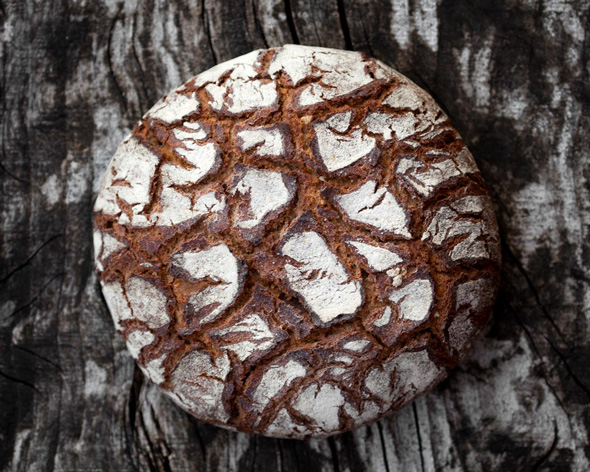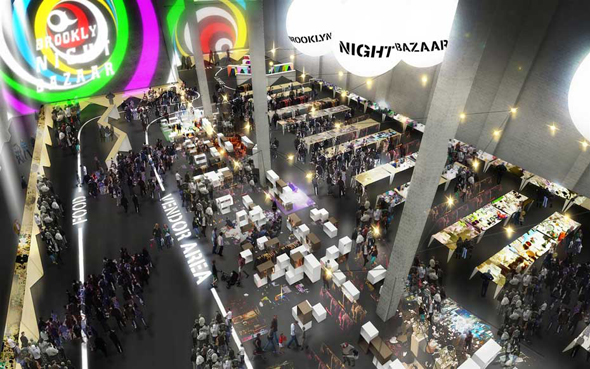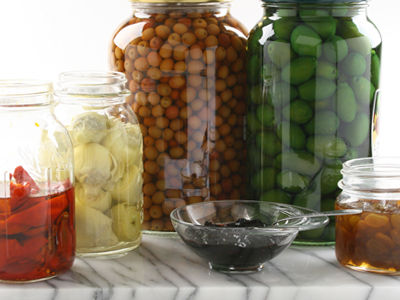
It's no secret that we're A) always hungry and B) consistently on the prowl for new dishes and recipes. So as part of an ongoing series, we'll be profiling innovators in the field of our primary lifeforce: food.
Today, we talk to the author of a gorgeous new cookbook, Beata Zatorska.
Starting with the name, Rose Petal Jam: Recipes & Stories from a Summer in Poland, Zatorska's cookbook has a charmingly whimsical feel. But hidden among photos of the Polish countryside and recipes for pierogi, pickles, and doughnuts are miniature history and anthropology lessons.
This book was a labor of love for Zatorska, who moved to Australia from Poland in 1981. She went on to become a family physician, but always looked back on her early childhood with her grandmother, a chef who also created herbal rememdies, as a force in shaping her life. So after a vacation to Poland, she decided to spend a summer in her native country and reclaim family recipes, including the namesake rose petal jam, and do a sort of culinary tour of her country.
We caught up with her to learn more about the recipes, Polish cooking, and a woman whose summers in the kitchen with her grandma shaped her entire life.
3W: What made you decide to do a cookbook? Was there a specific event that inspired it?
Beata Zatorska: It was returning to Poland after 20 years away that started it all--I visited my cousins who were still living in the old farmhouse where I spent the first years of my life with my grandmother. Though my grandma passed away long ago, my uncle still had many of her original recipes. Touching those old recipes in my grandmother's spidery handwriting felt like touching her hands again. I felt a strong connection to my past and had to write a story about the place I came from.

3W: Was cooking a big part of your life in Australia before you started working on this book?
BZ: I live with my husband [and co-author], Simon, and three teenage sons. I work full-time, so we share the cooking--often a matter of feeding a hungry family fast: pasta, salad, risotto, etc. My mother, Lidia, lives nearby and makes pierogi for the boys. They can easily go through 120 in one meal. Such traditional food is more time-consuming to make and sometimes involves the whole family lending a hand, rolling up cabbage leaves or cutting pastry into circles.
 3W:Describe your ultimate comfort food, the meal that brings you right back to your childhood.
3W:Describe your ultimate comfort food, the meal that brings you right back to your childhood.
BZ: It would have to be Silesian dumplings (kluski slaski in Polish). They are chewy dumplings made with potato flour, like giant gnocchi, served with a goulash or pureed beetroot. When I first went back to Poland, all my friends and family kindly cooked these for me (in fact, we were once served them three times on the same day, which was a test of our tact).
But the scent of wild rose petals is certainly the strongest reminder of my childhood. It was my job when I was five to collect these petals each morning in summer for my grandmother to make rose petal jam. I only have to smell rose petals to be back in my grandmother's garden.
3W: Your grandmother also gathered herbs to make remedies, and I know that's part of what inspired you to become a doctor. Do you think food is a form of healing?
BZ: My grandmother made wild peppermint tea to settle a stomach and valerin drops for colds. She even made her own cosmetics from plants she found in the forests. Any doctor will tell you healthy food leads to a healthy body, but I think food has emotional power too. Recipes that bring back memories of a happy childhood are certainly good for your wellbeing. The smells coming from my grandmother's kitchen (mushrooms or poppyseeds drying, yeasty cakes puffing up) filled our house and provided aromatherapy for the whole family.
3W: What are you hoping will be the legacy of this book?
I love the thought that somebody might find the time to gather wild rose petals and blend them with sugar into a simple jam like my grandmother did. Though I grew up in 1960s and '70s Communist Poland, when food was scarce, we never seemed to go without, thanks to my grandmother's imaginative recipes. I like to think not everything we eat today needs to come readymade from the supermarket.
Rose Petal Jam is the first installment of four seasonal cookbooks. The next one Sugar Orange Peel: Recipes and Stories from a Winter in Poland will be out in May 2012. We'll just be over here devouring pierogi until then.
--Layla Schlack
 May 29, 2012 Tweet
May 29, 2012 Tweet 



 Email tagged
Email tagged  Brittney Meyer,
Brittney Meyer,  Food,
Food,  photography
photography 






















